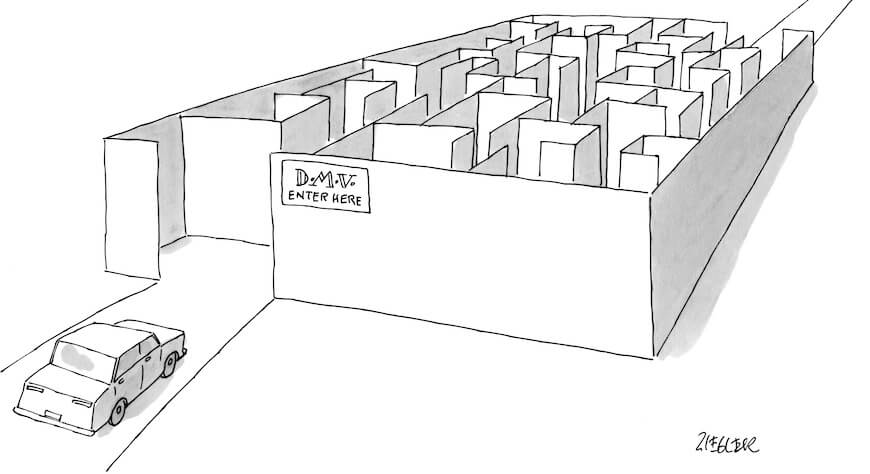
Some call it the Department of Motor Vehicles (DMV), others the Registry of Motor Vehicles, but its reputation for delivering service with a snarl has earned it a slew of more colorful names. Fair or not, it’s the brunt of jokes from the watercooler to late night television shows, and all it takes is one story for everyone to recount their own misadventures in dealing with motor vehicle issues.
In fact, just days after taking office last January, California Governor Gavin Newsom announced a comprehensive modernization and reinvention of the State’s troubled DMV. Towards the end of July, he released a report detailing efforts to improve services, an effort prompted by wait times that had averaged two hours last summer.
Then, the very next day, an ironic and likely avoidable move occurred. The DMV closed its offices for half a day to train 5,000 employees on more complex processing required by new REAL ID driver’s licenses, as well as how to deliver more “customer friendly” service.
This, as customers across the state waited outside in line while the four-hour training took place.
#DMVsucks pic.twitter.com/g1BXsb8DJ9
— Kent Vidrine (@kentvidrine) July 29, 2019
As one customer noted: “If they want to change it, I think it’s great. But if they want to keep as it is, then we just keep making more jokes about it on TV, right?”
To be fair, the DMV did announce well in advance that the offices would be closed. Still, we couldn’t help think there were ways around this, particularly considering the DMV’s issues with inconvenient customer service.
Make a move to online training
For starters, perhaps the agency could have provided online, on-demand training, so employees could do this during work lulls or in a staggered way so DMV offices could remain open? After all, if a two-hour wait time is unacceptable, an additional four hour delay is not going to change opinions for the better.
Further, if this in-person training required on-site instructors or coordination at the 183 DMV field offices where it took place, could costs and efforts have been reduced with cloud-based virtual training?
On another note, a focus of the training was to bring employees up-to-speed on how to efficiently process REAL ID applications, which are more complex and take more time. Beginning in October of 2020 in the U.S., these will be required to board airplanes and enter federal facilities.
not looking forward to today. @DarkPrevails @Mike_Matei @Beatlefish @ToysOfTheJedi @Rezikai @RETROTOYING #DMVHell pic.twitter.com/Z3jR9kdH0v
— pvt halibelfan (@halibelfan) March 29, 2019
Let’s get REAL about virtual training labs
Our virtual training labs simplify even the most complex training. Instructors can create unforgettable experiences and offer hands-on learning. Environments can be “gamified” with fun challenges. Multi-step classes can take employees logically from one class to another.
All of this enhances comprehension.
What’s more, monitoring, accompanied by chat, enables instructors to see if participants are struggling and offer assistance when it’s needed most of all.
Training on demand is a win win
Finally, training could be made available on-demand, and updated, as needed, so employees always have access to up-to-date instruction whenever they need it to reinforce what they’ve learned.
We don’t want to pick on the DMV, because perhaps they used some of these approaches. But one thing is for sure, if you’re trying to cultivate happier relationships, shutting down your offices and having customers wait four hours in a hot parking lot isn’t going to help.
DMV is HELL ! #DMV #departmentofmotorvehicles #DMVsucks #DMVisHELL #cartoon #cartoons #darkcomedy #darkhumor #anarchism #satire #politicalsatire #politicalcartoon #webcomics #politicalcartoons #webcomic #comic #comics #classwar #anarchy #anarchism #anticapitalist #anticapitalism pic.twitter.com/GVIhMBg5JY
— Erica Crooks (@crooks_erica) July 14, 2019
Then again, it probably would lead to a good new DMV joke or two.
Curious about how we help our customers with cloud-based virtual IT labs for training? Tell us your best or worst DMV experience and we’ll fast track you for a demo.



